15 Types of Trees in Arkansas (with Pictures)
-
Brooke Bundy
- Last updated:
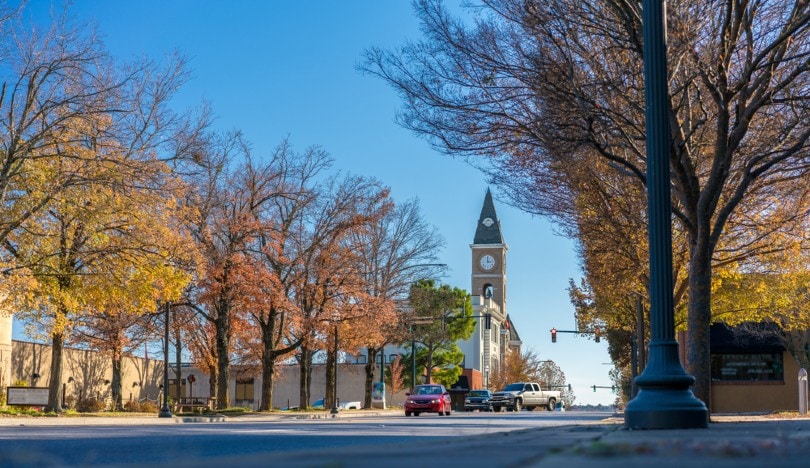
Arkansas is called “The Natural State” for a good reason. This state is packed full of a variety of flora and fauna, as well as outdoor activities, like hiking, swimming, and lots of room for biking. If you’ve spent much time in Arkansas, you’ve likely noticed the wide array of trees in the state. There are so many to see, and different species exist in different parts of the state, so it can feel exciting when you see a tree you’ve never seen before.
Here are some of our favorite Arkansas native tree species.
The 15 Types of Trees in Arkansas
1. Loblolly Pine
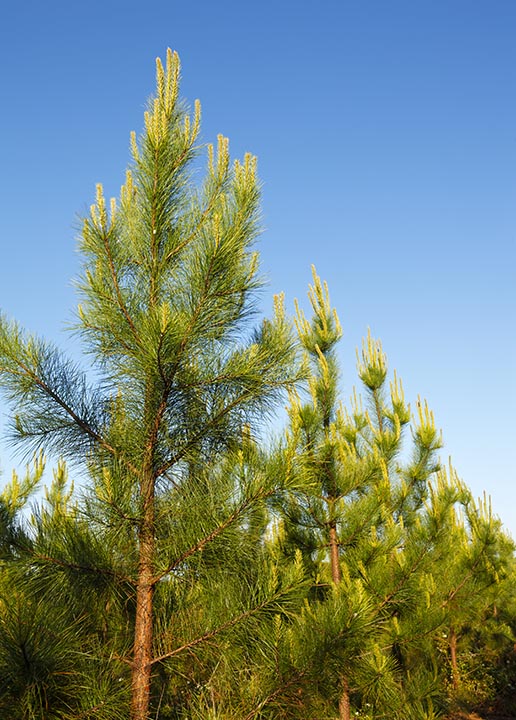
| Scientific name | Pinus taeda |
| Size | 60–90 feet |
| Type | Conifer, evergreen |
The Loblolly Pine is the state tree of Arkansas, so it gets to be first on this list. This large tree can reach up to 90 feet in height, with a spread of 30 feet or more at maturity. This is a coniferous evergreen tree, so it produces a variety of pine cones and keeps its beautiful green color throughout the year. It’s an important tree for timber production, and the timber industry often refers to this tree as the Southern Yellow Pine. It is the second most common tree species in the United States.
2. Winged Sumac

| Scientific name | Rhus copallinum |
| Size | 11–18 feet |
| Type | Flowering, deciduous |
The Winged Sumac has multiple names, including Shining Sumac, Dwarf Sumac, and Flameleaf Sumac. It reaches up to 18 feet in height and is a flowering plant that is part of the cashew family. This tree is prized for landscaping, and it puts out root runners that help create a dense cover for birds and other small animals. These are hardy trees that often thrive in places that other trees may not, like along busy roadways. It produces beautiful flowers that don’t leave excess mess or waste behind, but they do attract plenty of birds.
3. American Holly
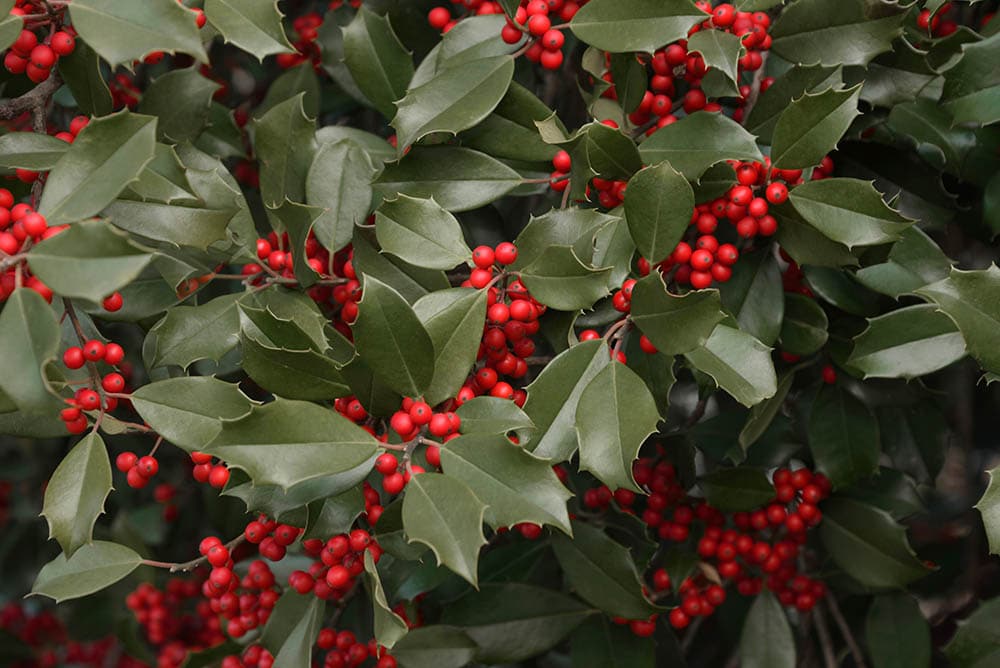
| Scientific name | Ilex opaca |
| Size | Up to 98 feet |
| Type | Flowering, evergreen |
The American Holly is often kept as a shrub for landscaping purposes due to its lovely red berries, but it is actually a large tree that can grow up to almost 100 feet in height. While this is a flowering tree, the flowers are not particularly showy. The red fall and winter berries are the primary reason people keep these plants. The leaves produce sharp thorns on the tips, which can make pruning difficult without care. There are multiple varieties of this tree on the market, with some specially bred to stay small and manageable for landscaping.
4. Red Buckeye
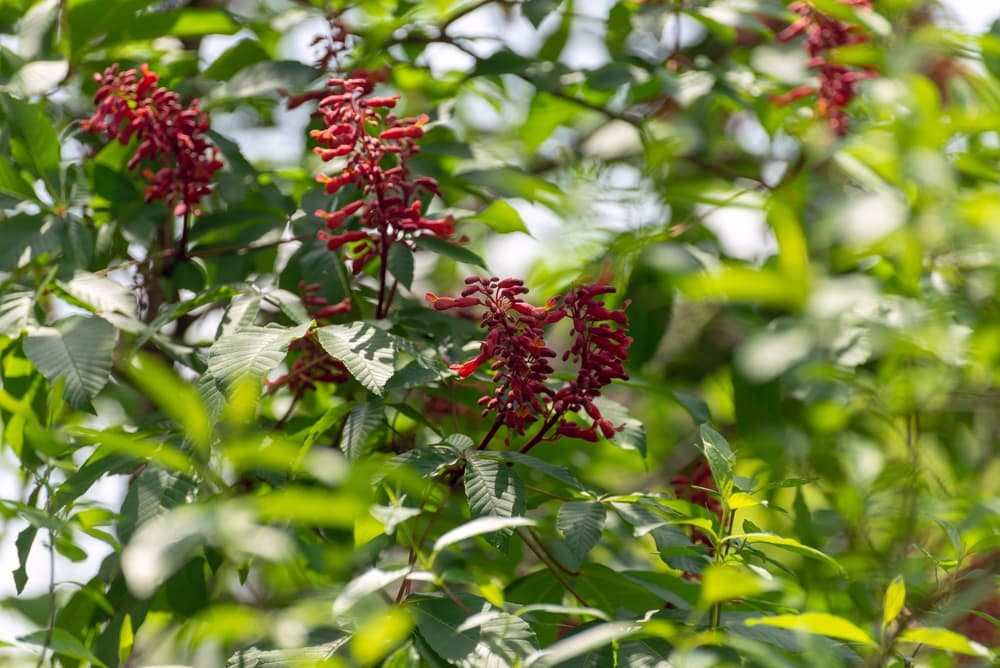
| Scientific name | Aesculus pavia |
| Size | 16–26 feet |
| Type | Flowering, deciduous |
The Red Buckeye, also sometimes called the Firecracker plant, is a relatively small tree that stays less than 30 feet at full maturity. The brightly colored flowers are attractive to pollinators, especially hummingbirds and bees. The flowers are hermaphroditic, which means that one of these trees is capable of pollinating itself without a second tree nearby. It also produces small fruits, which are far less showy and impressive than the flowers. There are multiple varieties of this tree with a variety of sizes and flower colors among them. Hybridization can occur naturally, resulting in new and unique flower colors.
5. Common Pawpaw
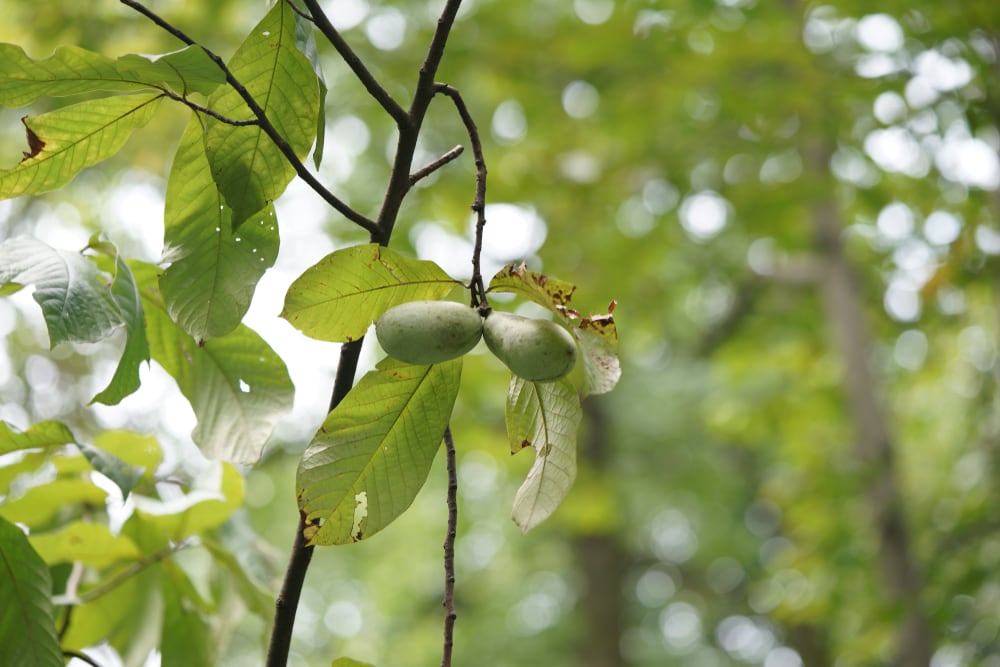
| Scientific name | Asimina triloba |
| Size | 35–45 feet |
| Type | Flowering, deciduous |
The Common Pawpaw is a relatively small tree, rarely reaching 45 feet in height, but it produces the largest edible indigenous fruit in North America. Although the fruits are edible, the seeds, bark, and leaves all contain a neurotoxin. It belongs to the Asimina genus, which is the only genus in the Annonaceae family that is temperate instead of tropical or subtropical. The Common Pawpaw produces fruits that are yellow, green, or brown, and that have a sweet flavor similar to custard, that shares similarities with the flavor of pineapple, mango, and banana. This tree tends to grow in patches, so you’re likely to find multiple trees in one area.
6. Downy Serviceberry
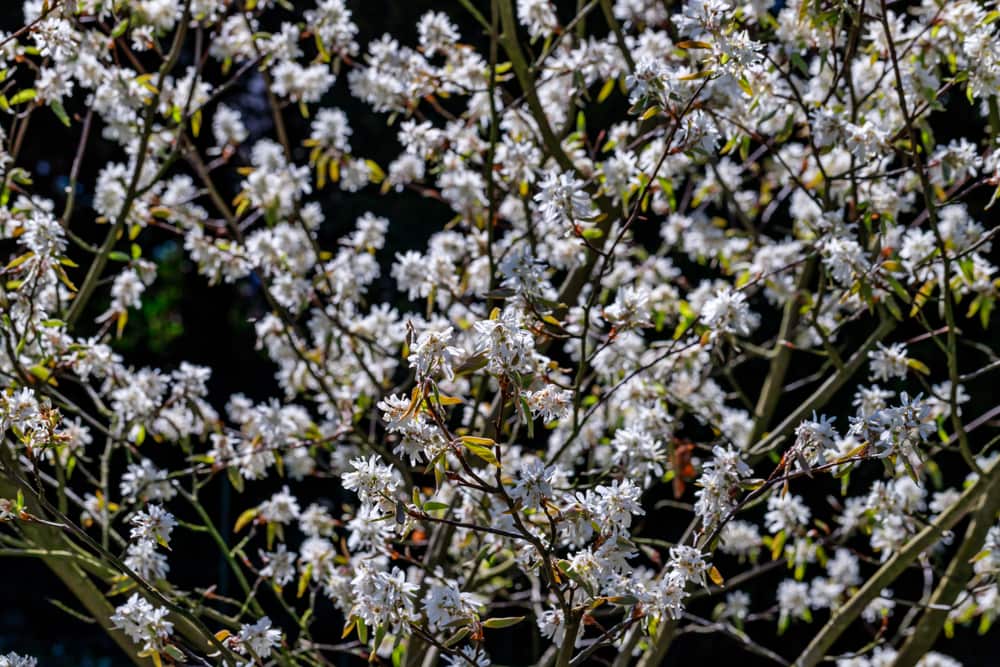
| Scientific name | Amelanchier arborea |
| Size | Up to 66 feet |
| Type | Flowering, deciduous |
The Downy Serviceberry can reach up to 66 feet in height, but most trees stay below 40 feet. They can easily cross pollinate with other Serviceberry species, leading to hybridization and difficulty in identifying the species of individual plants. They produce berries that appear in June, often leading to these plants being called Juneberries.
Some people believe that the “service” part of the name refers to these trees flowering around the same time that families in Appalachia would be able to make it to Sunday services because the muddy backroads would begin clearing up after winter’s end. Others believe that the name refers to the idea that the ground would become workable again for funeral services and burials to resume after the winter.
7. Flowering Dogwood
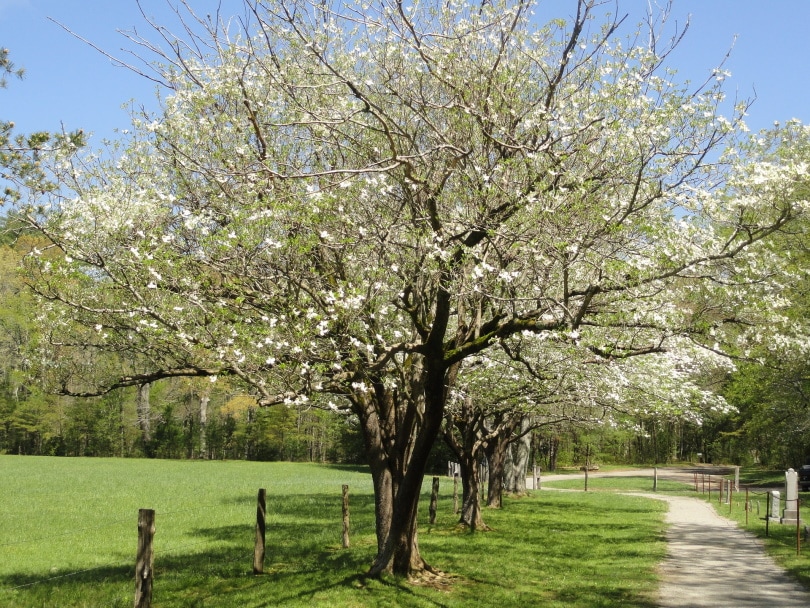
| Scientific name | Cornus florida |
| Size | Up to 33 feet |
| Type | Flowering, deciduous |
The Flowering Dogwood is a small to medium tree that produces beautiful white flowers, which has led to this tree being prized for landscaping. The flowers themselves are actually quite small and inconspicuous, but they are bunched together and surrounded by bracts, which appear to most people as petals. These bracts are usually white, but they can also be pink or red. Flowering Dogwoods typically flower in April to May, and in the fall, they produce bright red berries that grow together in small clusters.
8. Black Maple
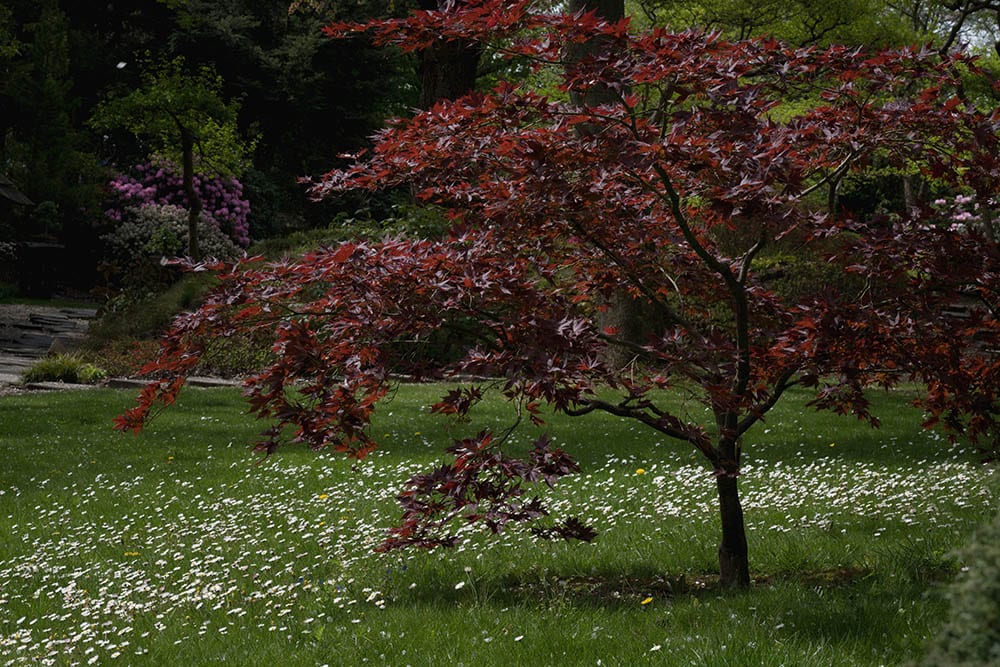
| Scientific name | Acer buergerianum |
| Size | 70–110 feet |
| Type | Flowering, deciduous |
The Black Maple is a large tree, reaching up to 110 feet in height. This tree is similar in appearance to the Sugar Maple, but it features leaves with three lobes, while the Sugar Maple’s leaves have five lobes. These trees are closely related and tend to hybridize, which can lead to variations of the characteristics of both parent trees. The Black Maple produces both male and female flowers on each tree, although in some uncommon instances, flowers can be hermaphroditic.
9. Sugar Maple
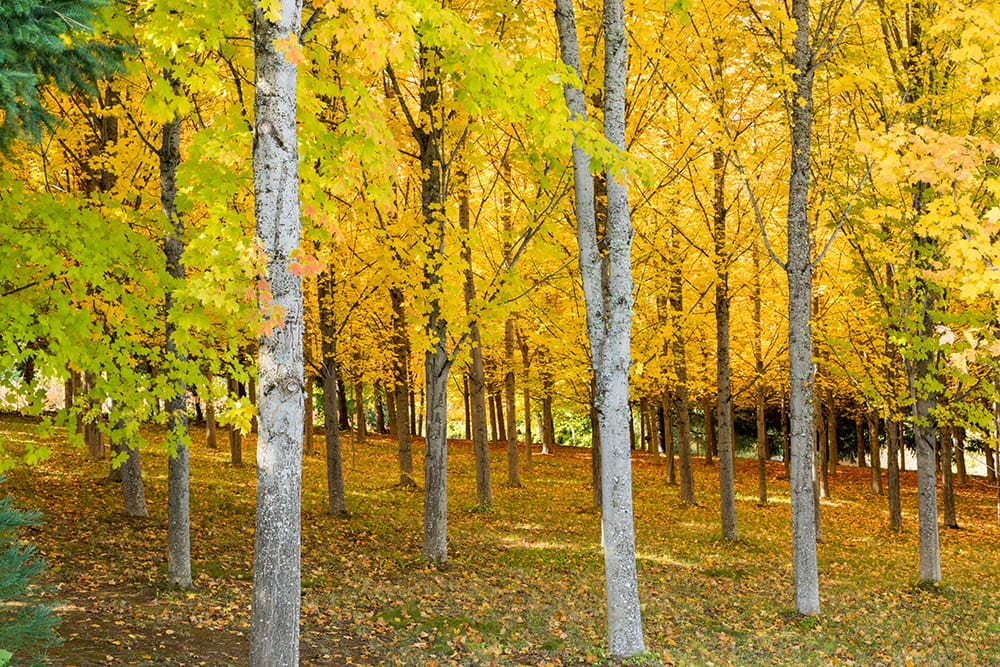
| Scientific name | Acer saccharum |
| Size | 80–150 feet |
| Type | Flowering, deciduous |
The Sugar Maple is a close cousin of the Black Maple, but it has five-lobed leaves and can get significantly larger. It is uncommon for Sugar Maples to exceed 115 feet in height, but some can reach 150 feet. This tree is best known for being the primary source of maple syrup, although this is not common in Arkansas. Surprisingly, Sugar Maples rarely begin producing flowers before 10 years of age, and some don’t begin flowering until they are closer to 200 years old.
10. Northern Red Oak

| Scientific name | Quercus rubra |
| Size | Up to 141 feet |
| Type | Flowering, deciduous |
The Northern Red Oak is an extremely common tree across much of the United States, and it can reach up to 141 feet in height, although most trees don’t exceed 90–100 feet. This tree is probably most well known for producing acorns, as well as their brilliant red and orange fall foliage. They are also known for having dull striping that runs along the entire length of the trunk. These trees can live up to 400 years of age, with a 326 year old tree being documented in 2001.
11. River Birch
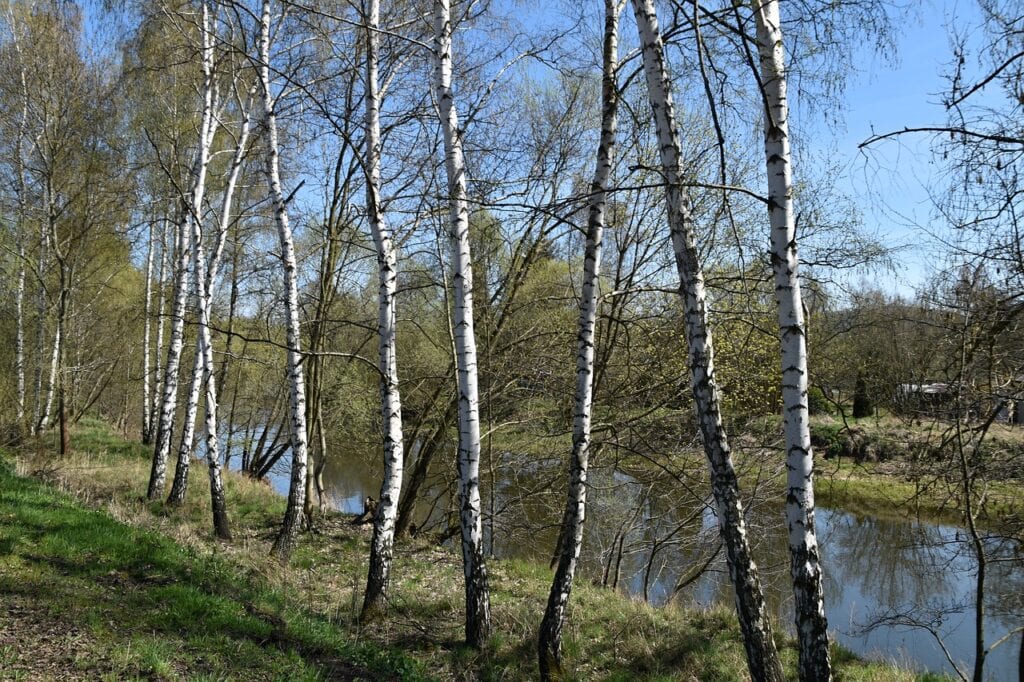
| Scientific name | Betula nigra |
| Size | 80–100 feet |
| Type | Flowering, deciduous |
Also known as the Black Birch and Water Birch, the River Birch is a flowering deciduous tree that can reach heights up to 100 feet. They are commonly found in wetlands and flood plains, and their papery bark that curls and peels makes these trees instantly recognizable. As these trees age, though, they begin to exhibit less peeling, instead developing a thicker bark that sits along the trunk in plates with minimal curling. This tree is an important part of wetland ecosystems, often reducing erosion and improving soil health.
12. Bald Cypress
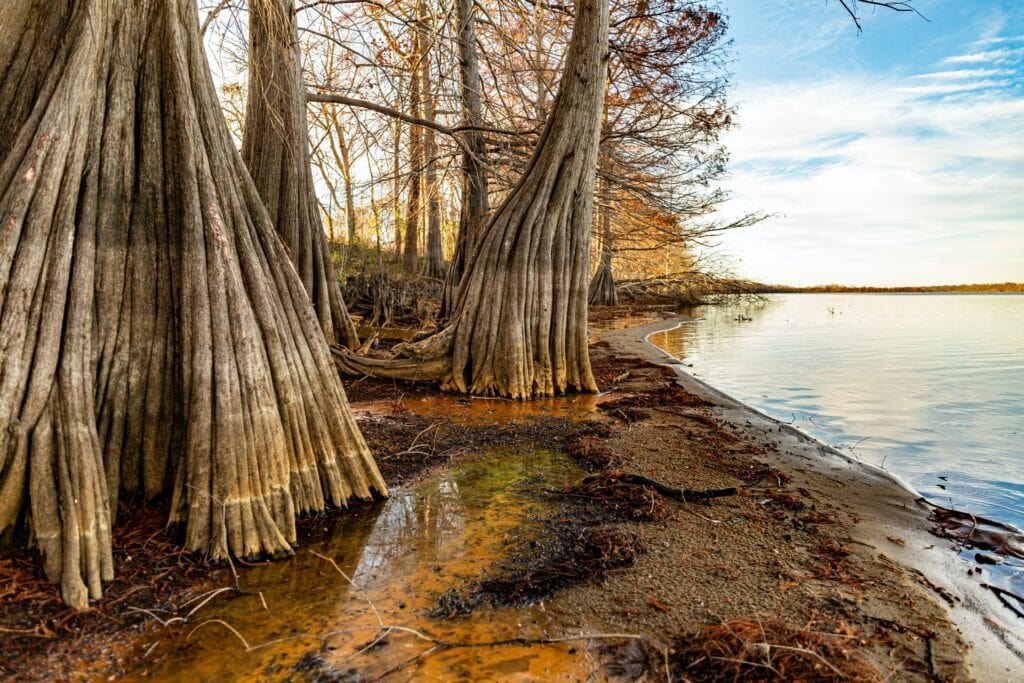
| Scientific name | Taxodium distichum |
| Size | 35–120 feet |
| Type | Conifer, deciduous |
The Bald Cypress is another tree that thrives in wetlands, and these trees can vary significantly in size, with some only growing to 35 feet, while others may reach 120 feet. These trees are recognizable because of their knobby growths called Cypress knees. The function of Cypress knees is unknown, but they appear most commonly on Bald Cypress trees growing in swamps.
Bald Cypress trees can be exceptionally long-lived, often exceeding 1,000–2,000 years in age. There are multiple living Bald Cypress specimens believed to be over 2,500 years of age, while The Senator, a Bald Cypress in Florida was over 160 feet in height and around 3,500 years of age when it was destroyed by vandals in 2012.
13. American Sycamore
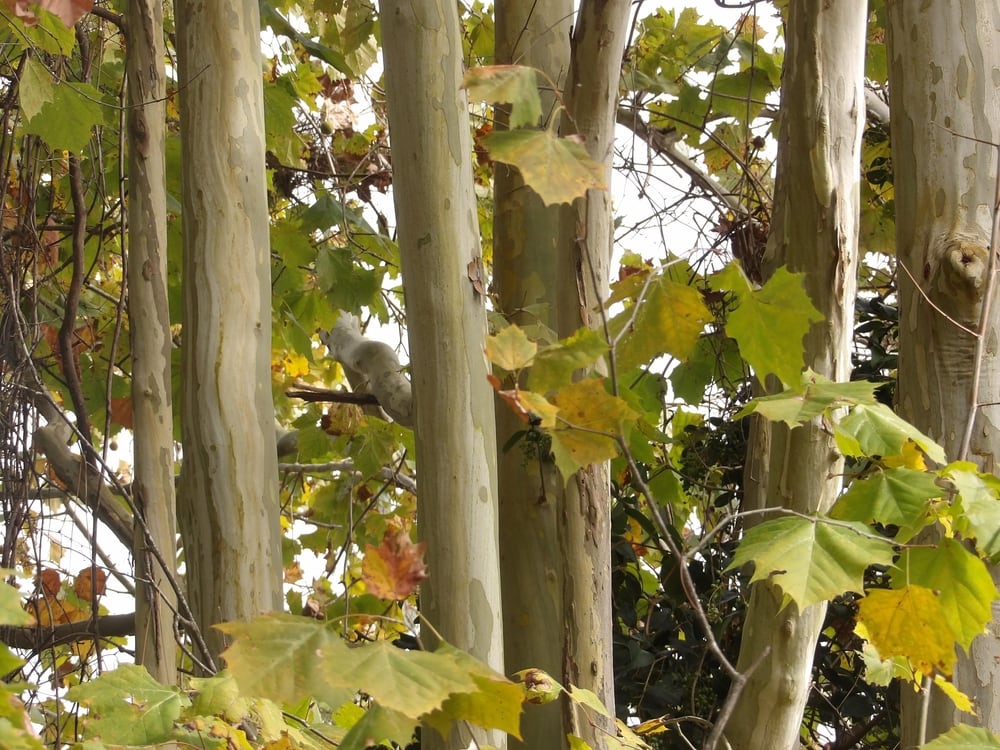
| Scientific name | Platanus occidentalis |
| Size | 98–131 feet |
| Type | Flowering, deciduous |
The American Sycamore is a large tree that can exceed 131 feet in height, with some trees developing thick trunks that exceed 6 feet in diameter. In 1770, George Washington recorded an American Sycamore tree that he reported to have a trunk greater than 44 feet in circumference. These trees have unique bark that is mottled in appearance and that flakes from the trunk in irregular pieces. The bark of these trees is less flexible than the bark of other trees, causing the bark to split and peel as the tree grows and ages. Native Americans used the bark from these trees as small dishes for gathering berries.
14. Southern Magnolia
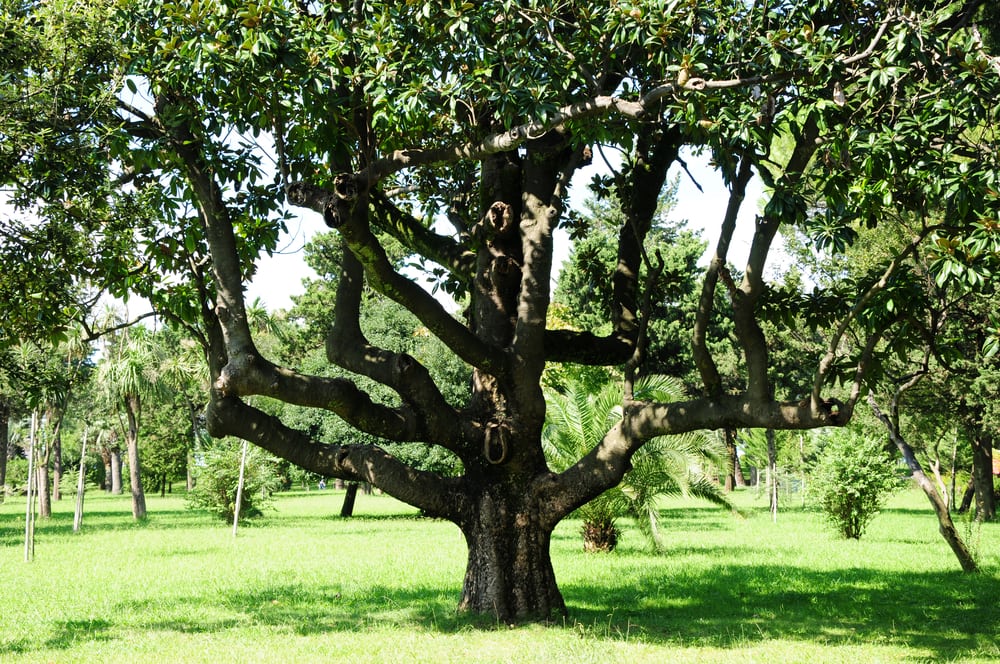
| Scientific name | Magnolia grandiflora |
| Size | Up to 90 feet |
| Type | Flowering, evergreen |
If you’ve ever seen a Southern Magnolia in bloom, you’ve likely never forgotten it. These trees produce large white flowers that have a distinct scent similar to lemon and citronella. The Southern Magnolia also has thick, waxy leaves that are distinct in texture and appearance. These trees are important for producing solid timber, and their sturdy wood is used for a variety of projects, like making furniture and pallets. Although they can get quite large, some Southern Magnolias are known to naturally only reach shrub-like heights. This is especially common when growing on coastal dunes.
15. American Sweetgum
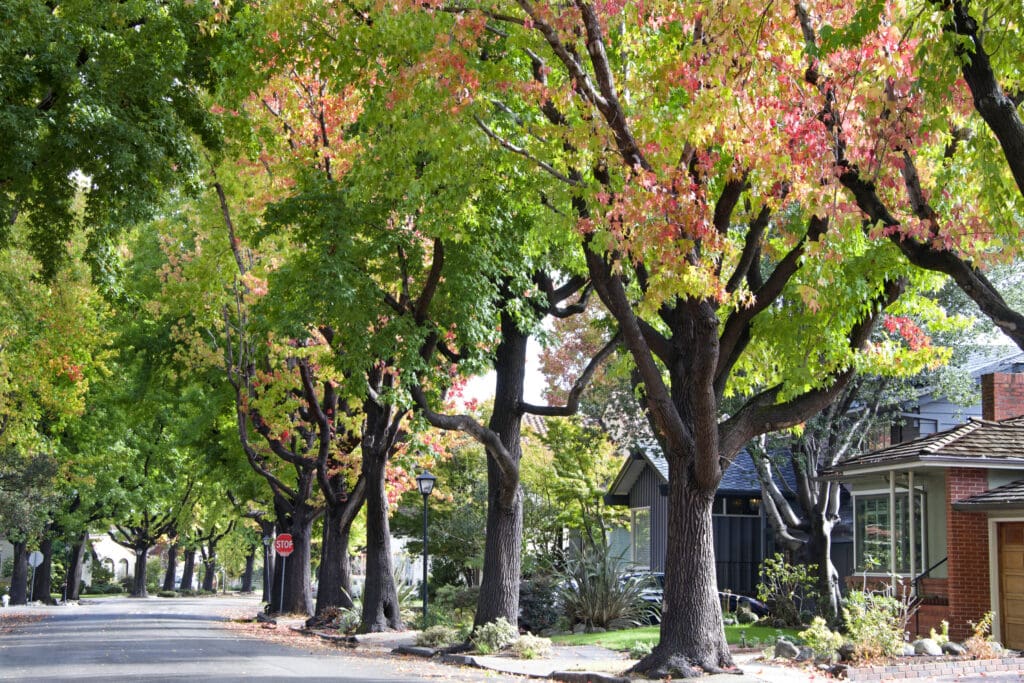
| Scientific name | Liquidambar styraciflua |
| Size | 50–70 feet |
| Type | Flowering, deciduous |
The American Sweetgum is best known for its unique fruit, which are small, brown balls covered in spikes that litter the ground around the trees in the fall and winter. These trees have deep ridges in their bark, and they tend to grow in a symmetrical fashion. The American Sweetgum produces sturdy timber, but it is reportedly difficult to season, making it of little use for many types of projects. The branches are known to have a large surface area that makes them prone to collecting snow and ice in the winter, making these trees a risk for damage to homes and vehicles.
Conclusion
There are dozens of tree species in the state of Arkansas. If you haven’t traveled across the state much, you might be surprised to see just how big of a variety of trees the state has to offer. All of the native tree species in Arkansas serve an important function in their own ecosystems, and it’s important to protect these plants from invasive species of plants and animals, as well as destruction due to deforestation.
See also: 18 Types of Trees in Kansas (With Pictures)
Featured Image Credit: shuttersv, Shutterstock
Contents
